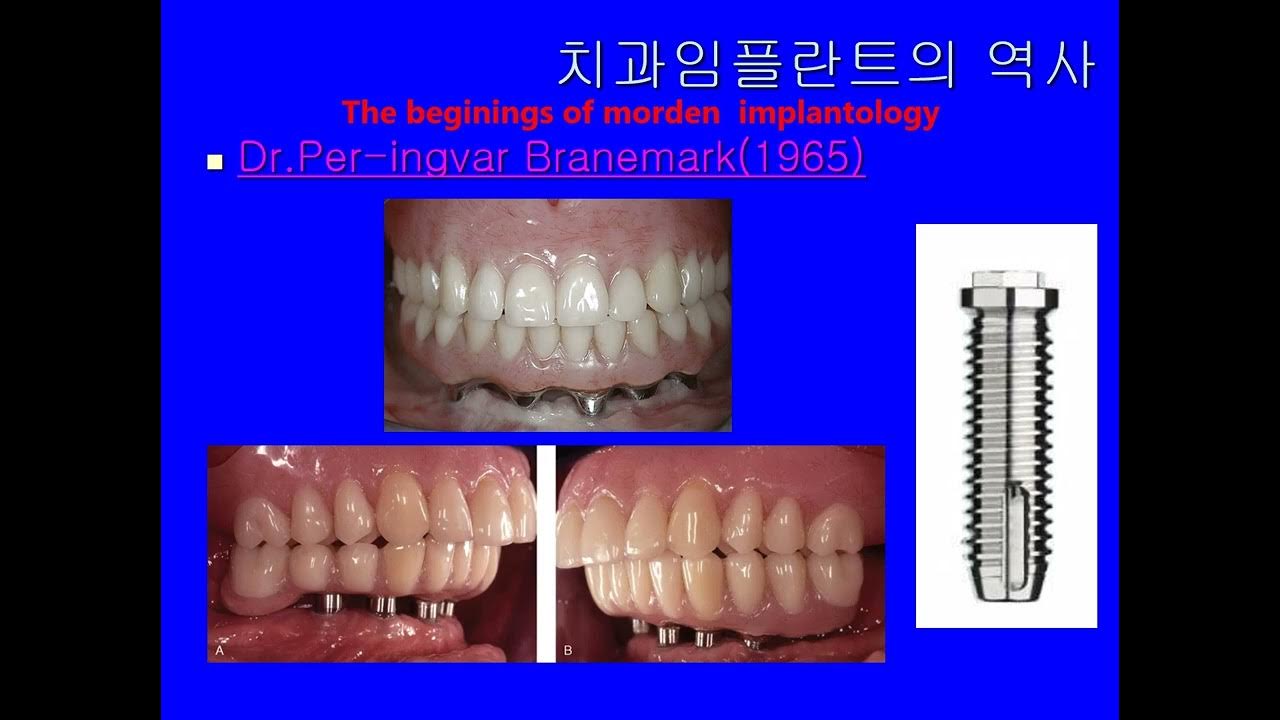Cell to Cell Communication Osseointegration
Summary
TLDRThis video explores the intricate process of bone healing and osseointegration, focusing on the dynamic interplay between cells, proteins, and signaling molecules after a dental implant surgery. It explains how the body reacts to an implant by forming a blood clot, initiating healing, and eventually creating new bone through a coordinated action of osteoclasts and osteoblasts. The video highlights how primary mechanical stability is replaced by secondary stability, as woven bone forms and remodels into a strong, load-bearing structure perfectly suited for the implant.
Takeaways
- 🦴 Our bones are remarkable structures, continuously rejuvenating through a balance of bone resorption and new bone formation.
- 🦷 A titanium implant replaces a lost tooth, initially held in place by mechanical friction, known as primary implant stability.
- 💉 The blood clot that forms after implant placement is crucial for the bone healing process, providing a matrix for new bone formation.
- 🩸 Platelets release substances that promote cell communication, such as thromboxane for platelet aggregation and PDGF for fibroblast cell division.
- 🛡️ Immune cells, including polymorphonuclear leukocytes (PMLs), clean the wound by removing bacteria, debris, and bone chips after surgery.
- 🦠 Macrophages play a key role in eliminating bacteria and tissue debris during the wound healing process, initiating the inflammatory phase.
- 🧬 Fibroblasts synthesize protective components like collagen and elastin, stabilizing the extracellular matrix and aiding wound healing.
- 🔬 Angiogenesis, or new blood vessel formation, restores oxygen supply to the site and supports the bone healing process.
- 🔨 Osteoclasts dissolve bone around the implant, creating space for new bone growth, while osteoblasts form new bone matrix.
- 🏗️ Bone remodeling ensures the implant becomes integrated with the surrounding bone, leading to long-term stability and mechanical strength.
Q & A
What is the primary function of bone resorption and new bone formation?
-The primary function of bone resorption and new bone formation is to maintain a finely balanced equilibrium that continuously rejuvenates the bone structure, ensuring it adapts to mechanical load and remains strong and functional.
What happens when a titanium implant is inserted into a bone defect?
-When a titanium implant is inserted into a bone defect, it is initially held in place by mechanical friction (primary implant stability). Over time, the process of osteointegration begins, which involves a complex sequence of biodynamic processes to achieve secondary implant stability.
What role do blood platelets play in the wound healing process after implant insertion?
-Blood platelets, or thrombocytes, play a crucial role by aggregating at the wound site, releasing messenger substances like thromboxane and PDGF (platelet-derived growth factor), and forming a fibrin network that creates a provisional matrix for bone healing.
How do polymorphonuclear leukocytes (PMLs) contribute to the healing process?
-PMLs, or polymorphonuclear leukocytes, help clean the wound by navigating toward the site of injury, killing bacteria through the release of reactive oxygen species, and releasing digestive enzymes to eliminate bacteria and tissue debris.
What is the role of macrophages in wound healing?
-Macrophages play a key role in the later inflammatory phase by eliminating bacteria through phagocytosis and releasing pro-inflammatory cytokines. They help stop tissue destruction and promote the preservation of the wound matrix, which is critical for healing.
What is the significance of angiogenesis in bone healing?
-Angiogenesis, the formation of new blood vessels, is significant because it restores oxygen supply to the wound, creating a foundation for bone healing. It is driven by perivascular cells migrating along a VEGF gradient into areas of low oxygen pressure.
How do osteoclasts and osteoblasts contribute to bone remodeling?
-Osteoclasts resorb bone at the implant site, creating space for healing, while osteoblasts lay down new bone matrix. This process ensures both the removal of damaged bone and the creation of new, structured bone for stability and integration with the implant.
What is the importance of woven bone in implant stability?
-Woven bone forms at the implant surface during the first week of healing. While it initially replaces primary stability, it is gradually remodeled into more organized lamellar bone, providing increasing secondary stabilization as the healing progresses.
How do osteocytes regulate bone remodeling in response to mechanical load?
-Osteocytes regulate bone remodeling by responding to mechanical load and releasing messengers like sclerostin. These signals coordinate the activity of osteoclasts and osteoblasts, ensuring that the bone structure adapts to the stresses imposed by the implant.
What is the final structure of the bone around the implant, and how is it adapted to mechanical stress?
-The final bone structure around the implant is a tracular meshwork that has been remodeled and aligned perpendicularly to the implant threads. This architecture absorbs mechanical stress effectively, similar to the arches and vaults of a Gothic cathedral.
Outlines

このセクションは有料ユーザー限定です。 アクセスするには、アップグレードをお願いします。
今すぐアップグレードMindmap

このセクションは有料ユーザー限定です。 アクセスするには、アップグレードをお願いします。
今すぐアップグレードKeywords

このセクションは有料ユーザー限定です。 アクセスするには、アップグレードをお願いします。
今すぐアップグレードHighlights

このセクションは有料ユーザー限定です。 アクセスするには、アップグレードをお願いします。
今すぐアップグレードTranscripts

このセクションは有料ユーザー限定です。 アクセスするには、アップグレードをお願いします。
今すぐアップグレード5.0 / 5 (0 votes)






